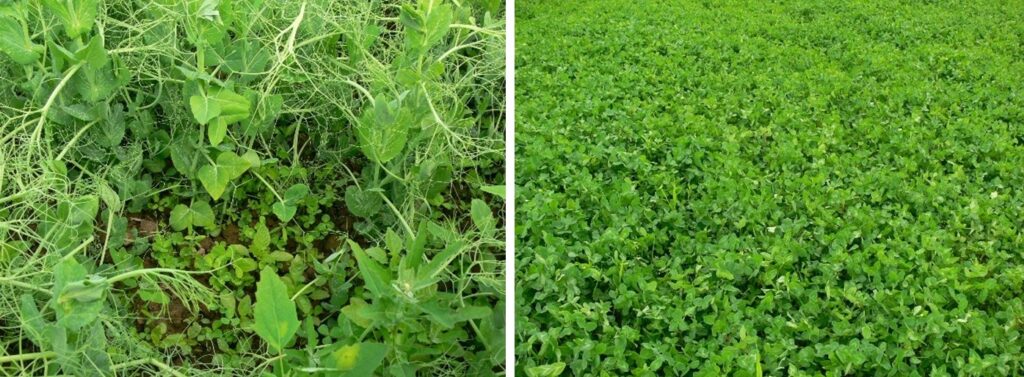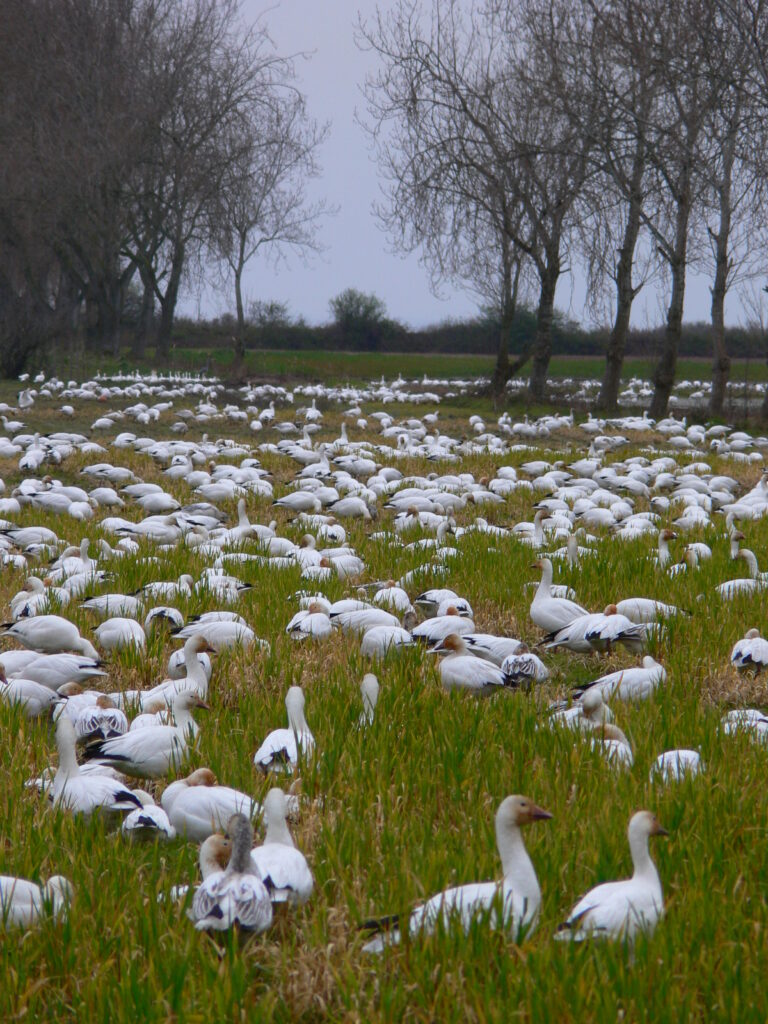Driving down the highway through Metro Vancouver and the Fraser Valley, it’s difficult not to notice an abundance of agricultural fields, ranging from popular U-Pick berry sites, to fall pumpkin patches and corn mazes, with a wide variety of vegetable fields in between. Many residents are familiar with fresh produce grown during British Columbia’s bountiful growing season, with an abundance of farmers markets with grown local signage, but what many may not have considered is what happens to these fields during the winter season, when produce cannot be grown.

Within Metro Vancouver approximately 20% of the region is designated as agricultural land, which makes up 55,000 ha (1). With such a large portion of land used for soil-based farming it is important to consider what happens in these fields during the off-season, and how farmers can best protect their soil under winter conditions.
Across the country it is common to see agricultural fields left empty during the non-growing season. Such fields are more vulnerable to changing environmental conditions, such as heavy rain, strong winds, and fluctuations in temperature. Metro Vancouver is known for its long rainy fall and winter, which may lead to unfavorable soil conditions. Excess water on heavy clay soils can cause pooling and leaching of nutrients (2). Fields left bare are also more susceptible to erosion caused by high winds, which results in a reduction of topsoil, where many key nutrients are found (2). During the winter, exposed soil is vulnerable to changes in temperature, when below freezing many micro-and macro-organisms in the soil cannot function, which decreases the rate of nutrient and organic matter breakdown (3). These factors can have a negative impact on soil health over time, and can ultimately degrade soil (4). Practices that mitigate the loss of soil nutrients during the off-season can have a significant impact.
By planting a cover crop the negative effects of leaving fields bare can be mitigated. A cover crop is usually a mixture of grasses, legumes, and grains, which is planted after a farmer has harvested their annual crops, such as potatoes or corn. The main purpose of a cover crop is to cover the soil during winter, when nothing else is grown on the field. These crops require little maintenance and have several positive impacts, such as:
- Controlling weeds by outcompeting them for light, water, and nutrients
- Providing more opportunities for photosynthesis, and thus the uptake and storage of CO2 from the atmosphere
- Increasing nutrients such as nitrogen and carbon
- Increase in long term crop yields (5)
- Reducing the need for as many fertilizers and herbicides
- Reducing erosion of soil from wind and rain, thus preserving topsoil that is full of nutrients and organic materials.


Areas such as Delta and Richmond also experience additional pressure from migratory waterfowl, such as the Lesser Snow Goose. Because of changing landscapes, and urbanization, winter cover crop fields have become a staple grazing habitat for these birds. The planting of cover crops can also help prevent damage to higher valued livestock forage, sport, and recreation fields, which may otherwise be overgrazed.
Cover crops are seen as a sustainable management practice for farms, and can provide many positive services, as mentioned above. This is a key management strategy that has been adopted by many farmers in the Delta region, with support from the DFWT Winter Cover Crop program. In 2021, out of the 14,957 acres of vegetable fields in British Columbia (6), 19% were planted with a winter cover crop through the DF&WT program in Delta or Richmond. Over the past 30 years Delta farmers have partnered with DF&WT to plant approximately 90,000 acres of Winter Cover Crops.
1. MetroVancouver Regional Planning . MetroVancouver . [Online] 2021.
2. Cover crop impacts on soil physical properties: A review. Blanco-Canqui, Humberto and Ruis, Sabrina J. 5, Lincoln : Soil Science Society of America, 2020, Vol. 84.
3. Effects of soil temperature on some soil properties and plant growth. Onwuka, B and Mang, B. 1, s.l. : Advances in Plants & Agriculture Research, 2018, Vol. 8.
4. Soil health and global sustainability: translating science into practice. Doran, John W. 2, s.l. : Agriculture, Ecosystems & Environment, 2002, Vol. 88.
5. Annual Report National Cover Crop Survey. West Lafayette : Conservation Technology Information Center, 2020.
6. Statistics Canada. Table 32-10-0154-01 Selected crops, Census of Agriculture historical data DOI: https://doi.org/10.25318/3210015401-eng
